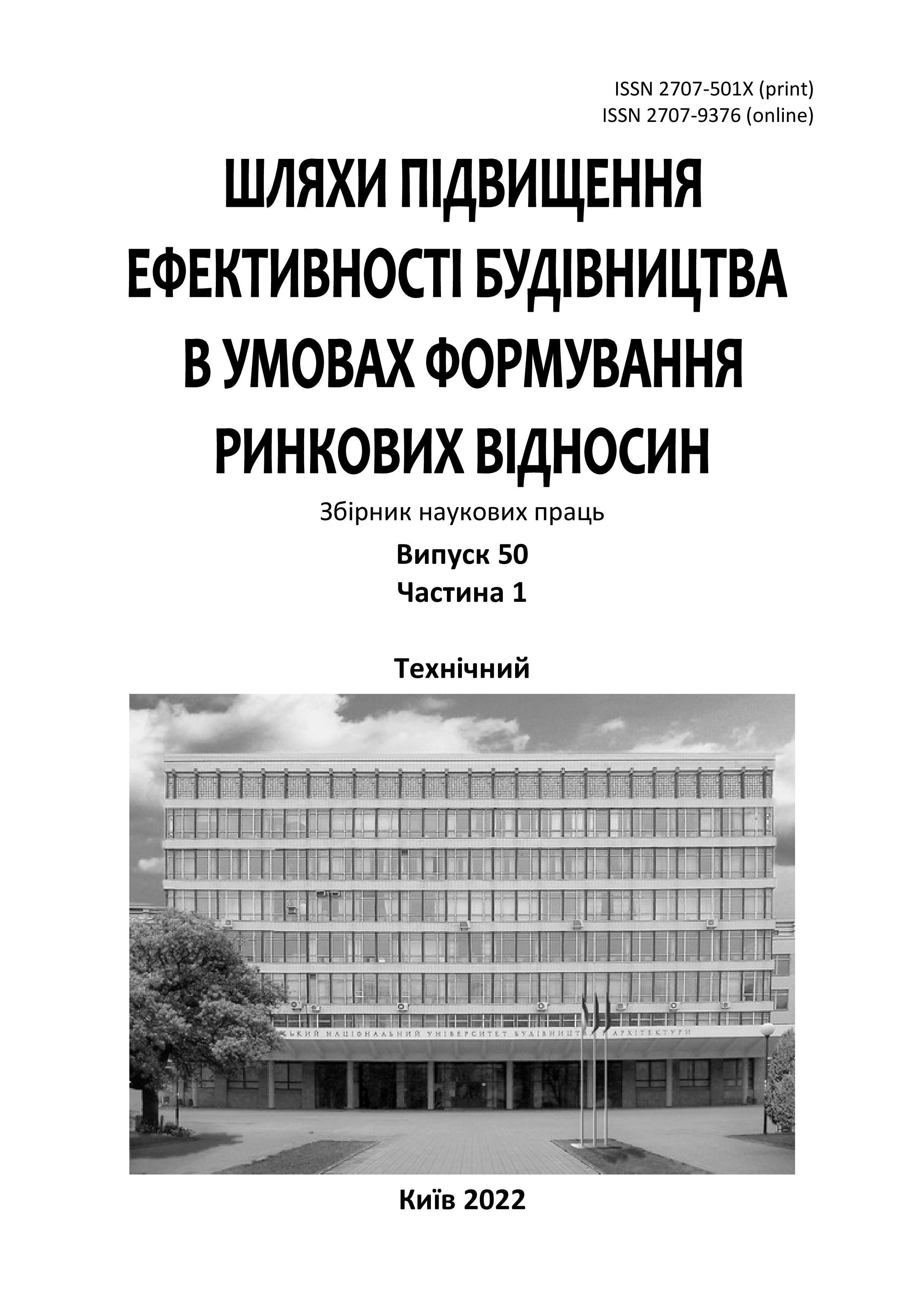High–reactive powder concrete on the basis of organic nanomodifikatorov
DOI:
https://doi.org/10.32347/2707-501x.2022.50(1).61-68Keywords:
concrete, cement, construction, mineral–organic complexes, surfactantsAbstract
A significant range of organic and mineral binders produced by the industry allows for a wide variety of combinations, providing a variety of resulting compositions. This, in turn, makes it necessary to establish general regularities in the formation of their properties. An attempt is made in this article. The results of studies of the properties of concrete, which are a composition of Portland cement, fine aggregate and mineral–organic complex, intended for the creation of special structures. It is shown that the use of the organic component of the mineral–organic complex of micelle–forming surfactants or polyalcohols leads to the sealing of the inner surfaces of the pores that are formed in concrete, which leads to an increase in the strength of concrete. It has been proven that the most effective use of the mineral is as a mineral component of complex organic compounds containing so–called d–elements, such as iron. The currently widely used mineral–organic compositions of the first type are, as a rule, "mineral binder – organic polymer" or "mineral binder – bitumen (tar)" systems. These types of mineral–organic compositions have undergone quite serious tests and have been tested in operation and have not sufficiently confirmed their effectiveness. But, as you know, these types of organic materials have the disadvantage of aging, which is accompanied by depolymerization (polymer) or a change in structure (asphalts, tars). Therefore, the durability of this type of resistance is limited by the organic component of the mineral–organic composition. It is known that the adsorption properties of derivatives of higher fatty acids depends on the length of the hydrocarbon radical. This is due to the strength of attachment of derivatives of higher fatty acid to the mineral surface. This largely depends on the solubility of the compositions are formed. The solubility of these compounds is, in turn, is determined by the order of solubility of the corresponding salts higher fatty acids. The solubility of these compounds, in turn, determined by the solubility of the respective salts of fatty acids. the authors obtained a mineral–organic material which is a system of "mineral binder based on calcium – fatty acid – a substance containing iron". Mechanism of structure obtained mineral–organic material explained as follows. As is well known, are unsaturated higher fatty acids with two or more double bonds with oxygen independently oxidized.
References
Arteit, C, Garcia, Е. (2008). Impact of superplasticizer concentration and ultra–fine particles on the rheological behaviour of dense mortar suspensions. Cement Concrete Research, 5, 633–642.
Bazhenov, M., Lukuttsova, N.P, Matveeva, E.G. (2010). Research nanomodified fine concrete. Herald MGRS, 4, T. 2, 415–418. (ru)
Bentz, D.P. (2005). Replacement of "coarse" cement particles by inert fillers in low w/c ratio concretes. Experimental validation. Cement Concrete Research, l, 185–188.
Chujie, J., Wei, S., Shi, H., Guoping, J. (2009). Behavior of steel fiber–reinforced high–strength concrete at medium strain rate. Front. Archit. Civ. Eng. China. 131–136.
Erdem, K, Kirca, O. (2008). Use of binary and ternary blends in high strength concrete. Construction and Building Materials, 7, 1477–1483.
Gluhovskij, V.D., Pakhomov, V.A. (1978). Slag– alkaline cements and concretes. Kiev: Budivelnik. (ru)
Papayianni, I., Tsohos, G., Oikonomou, N., Mavria, P. (2005). Influence of superplasticizer type and mix design parameters on the performance of them in concrete mixtures. Cement Concrete Research, 2, 217–222.
Shyshkin, A.A. (2014). Alkaline reactive powder concrete. Construction of unique buildings, 2, 56–65. (ru)
Shyshkina, A.A. (2014). The porous reactive powder concrete. Construction of unique buildings, 8, 128–135. (ru)
Shyshkina, A.A. (2001). Properties and foam technology, modified iron oxides: diss. on scientific. step. Ph.D. Kryvyi Rih: KNU. (ru)
Downloads
Published
How to Cite
Issue
Section
License

This work is licensed under a Creative Commons Attribution 4.0 International License.
Authors who publish with this journal agree to the following terms:
- Authors retain copyright and grant the journal right of first publication with the work simultaneously licensed under a Creative Commons Attribution License that allows others to share the work with an acknowledgement of the work's authorship and initial publication in this journal.
- Authors are able to enter into separate, additional contractual arrangements for the non-exclusive distribution of the journal's published version of the work (e.g., post it to an institutional repository or publish it in a book), with an acknowledgement of its initial publication in this journal.
- Authors are permitted and encouraged to post their work online (e.g., in institutional repositories or on their website) prior to and during the submission process, as it can lead to productive exchanges, as well as earlier and greater citation of published work (See The Effect of Open Access).

